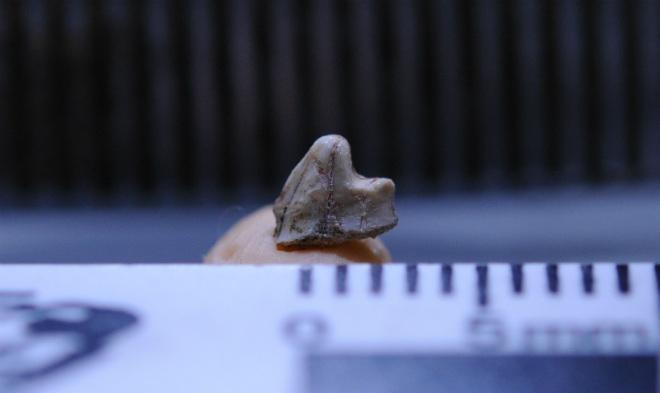Rare, ancient mammal named after David Bowie’s alter ego

By: Marina Wang
Researchers in Brazil have newly described a species of ancient mammal and named the creature Brasilestes stardusti, after Ziggy Stardust as a tribute to David Bowie’s alter ego.
The new species was based on a fossil discovered in December 2015, a month before the famous rock singer’s death. Bowie created Ziggy Stardust as an alien rock star persona for his 1972 album The Rise and Fall of Ziggy Stardust and the Spiders From Mars.
The newly described mammal would have been around the size of an opossum and dates back to the Mesozoic era, 87 to 70 million years ago. Brasilestes is the only Brazilian mammal known to have coexisted with the dinosaurs.
“We were visiting Mesozoic outcrops when Júlio Marsola [a member of the research team], keen-sighted as a lynx, spotted a small tooth sticking up out of a rock,” said paleontologist Mariela Cordeiro de Castro in a press release. The researchers discovered a pre-molar with a crown length of 3.5-milimetres.
“The particular outcrop where I found Brasilestes is interesting, with dozens of fragments of Mesozoic crocodile eggshells. I bent down to look more closely at a small part of the outcrop to see if there were any eggshells and spotted the tooth,” said Castro. “If it had stayed out in the open like that for a few more days, the rain would have swept it away.”
Based on the fossilized tooth, the researchers posit that Brasilestes could belong to the same mammal group as armadillos, sloths and anteaters, but the sample is too small to draw any conclusions. “The microstructure of Brasilestes‘ premolar enamel is very similar to that of the nine-banded armadillo,” said Castro.
“The discovery of Brasilestes raises many more questions than answers about the biogeography of South American Mesozoic mammals,” said Max Langer, a professor at the University of São Paulo. “Thanks to Brasilestes, we’ve realized that the history of Gondwana’s [an ancient supercontinent] mammals is more complex than we thought.”
The discovery was announced at the end of May and was published in the journal Royal Society Open Science.



